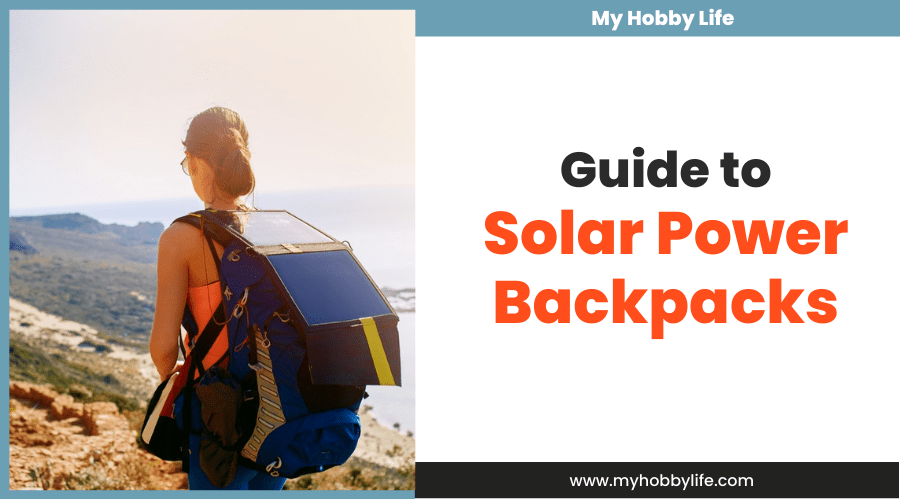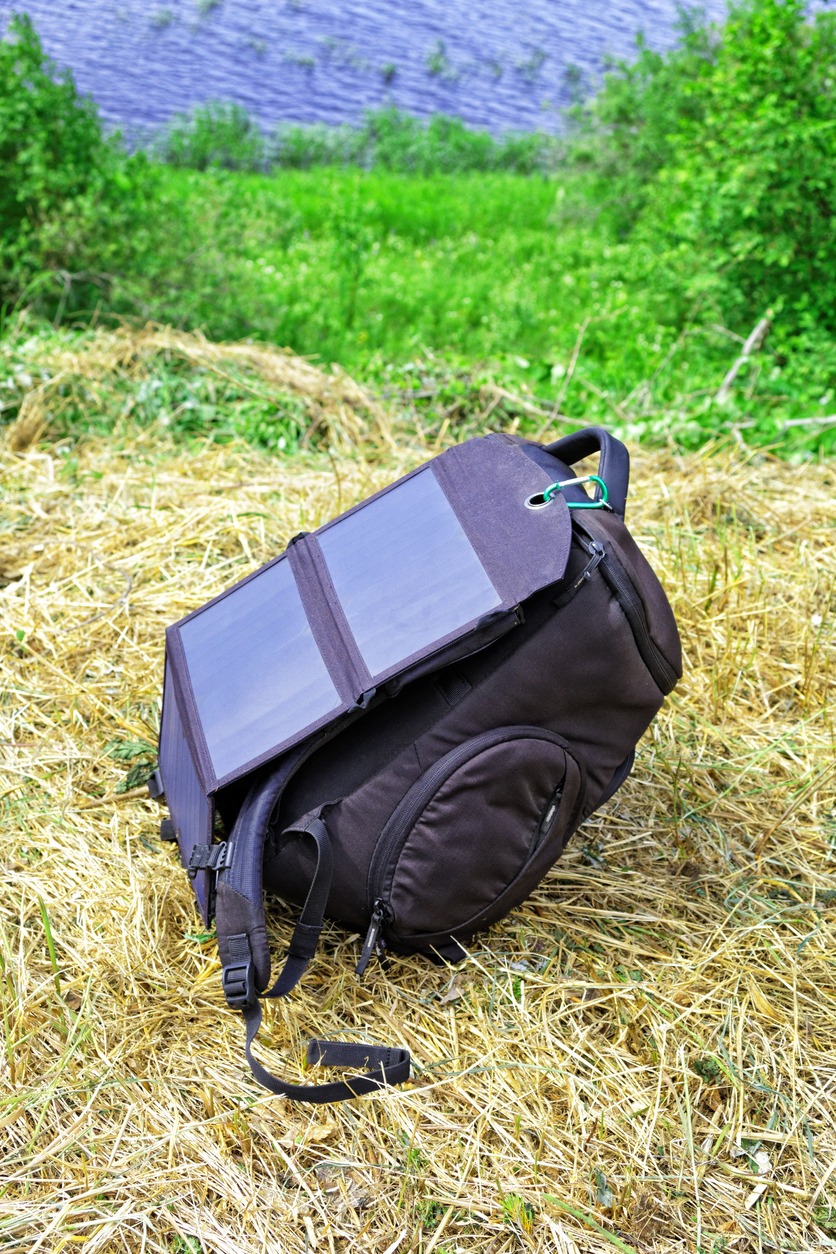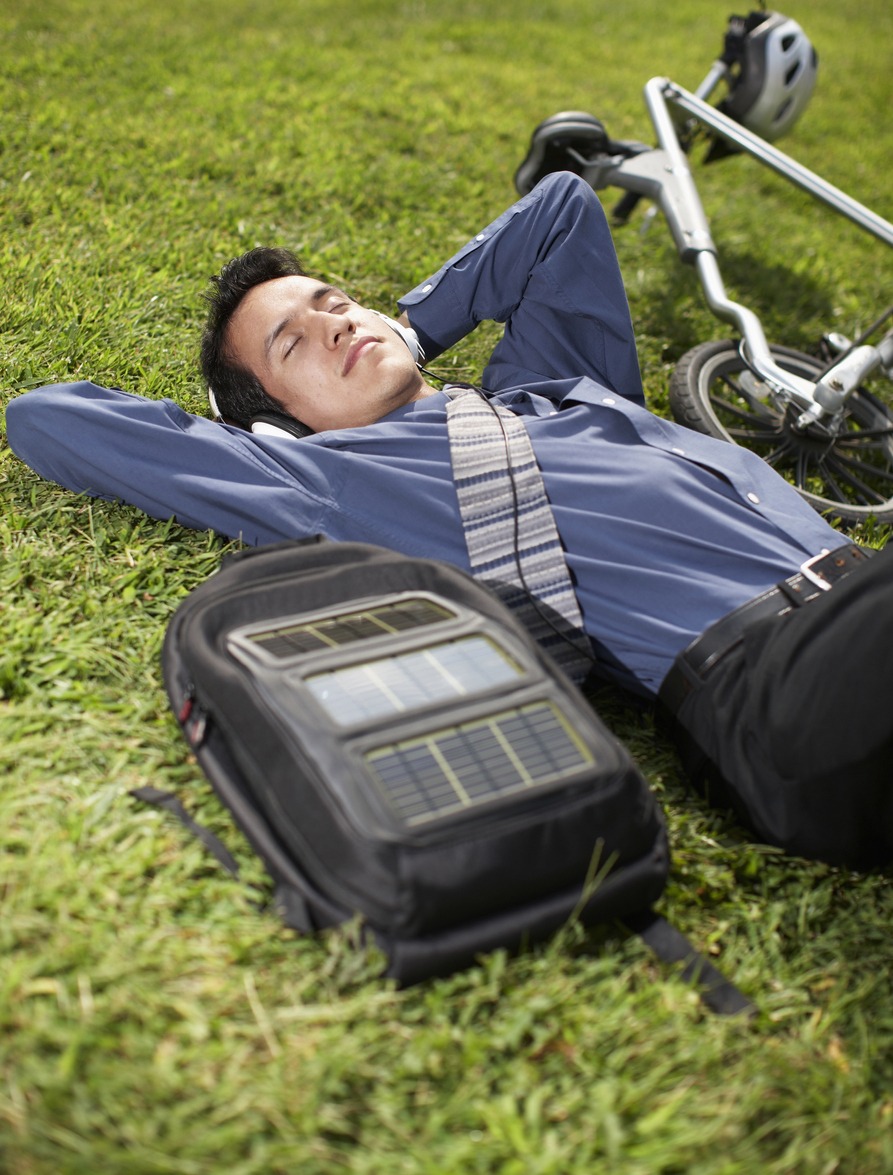There are a couple of reasons for being out and about. It can be a part of one’s job – for instance, a business person, a park ranger, a wildlife biologist, or a professional nature photographer. Or it can also be an interest or a hobby, such as hiking, camping, fishing, amateur wildlife photography, or traveling.
But whatever occupation or interest you are doing, you all know the common denominator – that being on the move while needing to keep your electronics charged can pose a dilemma. You need power to keep your laptop and smartphone charged at all times while traveling to meet your clients every day. You also need power to keep your GPS device functioning while navigating the trails while hiking in the middle of the woods. And if you’re a traveler, you need to have your DSLR camera and smartphone packed with power to capture your adventures constantly.
With solar power backpacks, you can harness your solar energy to charge your mobile devices on the go. Unlike a solar generator, solar power backpacks aren’t that costly. However, they are more expensive than your regular backpack. Despite the solar panels on the back, they don’t put an extra burden on users since they are lightweight.
Advantages of solar power backpacks
They use a renewable source of energy
The most significant advantage of using solar power backpacks is that they rely on a clean and renewable source of energy as opposed to the traditional use of fuel as an energy source.
Think about it – as long as the sun shines, solar energy is inexhaustible. It’s going to be always available for use. It’s not also affected by the ongoing energy crisis or the unstable factors surrounding the world fuel market.
Solar energy is green energy, which means it doesn’t cause pollution and harm the environment. So, by using a solar power backpack, you’re also contributing to reducing pollution and keeping the environment clean. In addition, you don’t have to put up with the smell of fuel or the annoying noise of traditional generators.
They allow you to recharge your devices anytime, anywhere
Are you stuck in the middle of the woods? No worries! Use your solar power backpack to charge your mobile devices. As you can see, solar energy isn’t limited by the geographical distribution of resources. It doesn’t matter whether your phone is running low on power. Your solar power backpack will always power your devices as long as it’s been exposed to the sun. It’s an immense advantage, especially if you’re always out and on the move.
They resist weather elements
Solar power backpacks are designed for outdoor use, so no matter the weather condition, it won’t affect their bags’ durability and the solar panel’s functionality.
Most solar power backpacks on the market are designed to resist all types of weather elements effectively. They are made of highly durable and waterproof materials, plus double stitching and means of reinforcement to extend the bag’s service life as possible. The sturdy material and construction ensure that your bag will keep your items dry and that the solar panels will still be able to charge effectively, even during rain or snow.
They are easy to use
Another advantage of solar power backpacks is that they’re straightforward to figure out. They have no complicated moving parts, no extension cords, or no electric outlets required. Solar power backpacks are easy to install, and they’re ready to use in no time, allowing for hassle-free operation.
They serve a wide range of needs
Another advantage of solar power backpacks is their impressive array of functionalities.
Solar backpacks are available in a wide range of designs with multiple compartments and pockets integrated to suit the individual needs of users. For example, some high-end models have a compartment to accommodate a water bottle. You’ll always find a model that will suit your specific requirements.
Things to look for in a solar power backpack
Charging voltage
Voltage is essential for solar backpacks. To charge your devices, the solar power backpack needs enough voltage. Choose a solar power backpack with a voltage specification equal to or greater than the needs of your devices. USB devices typically need 5V to charge, so choose a 5V output solar pack or higher.
Battery pack
An excellent solar backpack must have a battery pack since this will act as your fast-charging unit. Charging directly from the panels is slow, so head for the battery pack for a quick recharge. The battery pack must be hefty enough to charge your devices.
Solar panel size and orientation
A 7-watt solar panel is suitable for charging the battery pack in about 10 hours of sunlight. Higher-wattage panels can charge battery packs faster. A solar panel on a backpack can quickly charge on a regular sunny day. Make sure that the panels must be facing the sun. And, if possible, tilt it to about a 45-degree angle to the sun’s rays to increase the amount of energy available for the panel.
Direct access to sunlight
Solar panels need to be directly oriented to the sun as you use them. They have to be on the same side as the sunlight. Most solar panels are attached to the backside of the backpack, which is considered a good position. However, you can benefit more if the solar backpack has a detachable solar socket and expandable cables. When you’re hiking and want to take a break in the middle of the day, you can place the detachable solar socket on the top of your tent or RV while taking a nap inside. This way, you don’t need to put the whole bag outside your tent or RV if you need power.
Weight
Just as with choosing any bag to bring on travels, the weight of a backpack is a significant factor. Slightly heavier solar backpacks are fine for day hikes, but as the distance and time of the hike increase, a backpack’s weight becomes a more critical factor. Also, the size of the solar panel and the storage battery affect weight; the larger the capacity, the heavier it gets.
Size and volume
A small and medium-sized backpack is fine if you’re looking for a day-hike backpack or carry-on bag for work. But if you want to do some serious trekking, a bigger and larger backpack is what you need since you have to bring more camping gear, supplies, food, etc. This depends on what you will use the solar power backpack for.
Ports
The more USB ports a backpack has, the better. Most solar backpacks come with only one port, so you can only charge one device or phone. If you’re traveling with more than one device, spending more to get a pack with more charging ports will be worth it.
Sockets and pockets
A typical camping backpack has enough sockets and pockets, and you must look for the same when picking a solar backpack. Make sure it has appropriate pockets for water bottles, first aid kits, gadgets, etc. There must also be a pocket or socket inside the bag for your devices to rest while it’s being charged.
Durability
A solar backpack you intend to use for travel must be built with high-wear materials to withstand different outdoor conditions. A waterproof, shock-proof, and dust-proof backpack is worth the investment.
Price
Another good thing about solar power backpacks is that they are available at various price points, so the price is another factor when choosing your solar power backpack. Higher price tags usually correlate with better quality, less weight, and increased durability. But depending on your needs, you must always pick a backpack that will give you the most bang for your buck. Some higher-end backpacks may have features you don’t need, so it’s not a practical investment.
Extra features
You might have to look for other features in a solar power backpack. It really depends on your needs and preferences.
- Hydration bladder – A built-in hydration bladder saves you from carrying water bottles around on the side of the pack. This feature provides easy access to drinking water when you pack for hiking in the woods for a day or even longer.
- Integrated power bank – Some solar backpacks have built-in power banks that can collect energy in the daytime and save it for later use. This way, you can charge your devices even if it’s dark and the sun is no longer out. However, a power bank can add some weight to the backpack.
- Padded laptop sleeve – For business people who plan to carry their laptops in a solar backpack, a padded laptop sleeve is essential for protecting your precious gadget.


